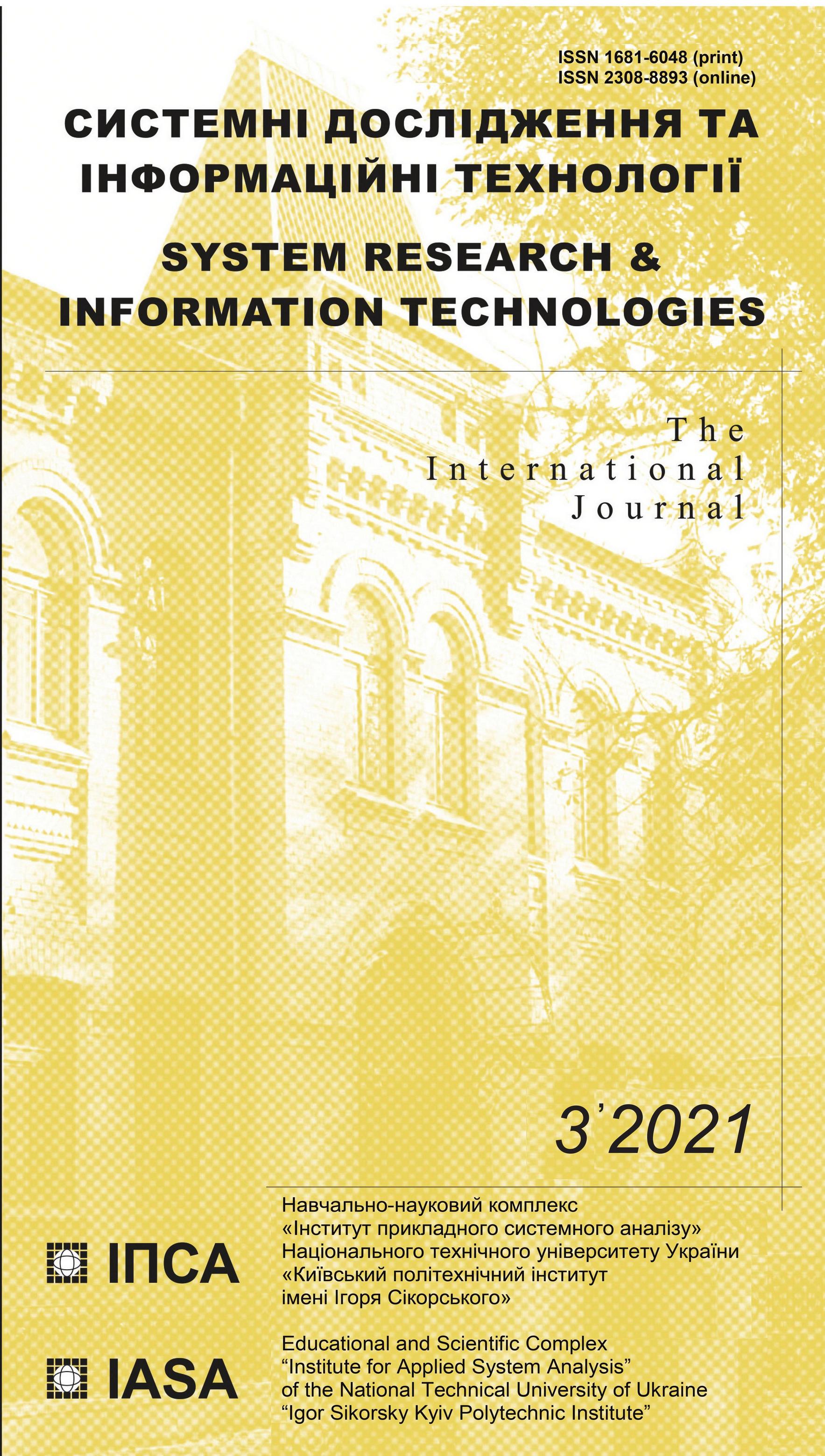Technology progress implementation based on a modified version of R.M. Solow economic growth model: with production s-curve consisting of n-steps
DOI:
https://doi.org/10.20535/SRIT.2308-8893.2021.3.08Keywords:
modified Solow’s model, technology gap, periodic cycles and chaosAbstract
The comparative analysis of the neoclassical Solow’s model and the modified Solow’s model in the implementation of technological progress has shown undeniable advantages of the modified Solow’s model. A modified version of the Solow’s economic growth model, based on an n-step production function in the form of n S-shaped functions for the implementation of technological progress, ensures the growth of the economy on a sufficiently large time interval comparable to the duration of the life cycle of the economy under study. In this interval, referred to as the “technology gap”, intensive output y (t) can be carried out according to the following options: monotonic decrease (stable 1-cycle) of the considered model; oscillations (stable n-cycles, n=2,4,16,…), “the economy marks time”; chaotic fluctuations. This result for the models of economic growth has not been described in the literature.
References
Alexey Lopatin, “A Modified Version of Solow’s Economic Growth Model with Successive Using Composite S-Curves for Technological Progress Implementation”, 2020 IEEE 2nd International Conference on System Analysis Intelligent Computing (SAIC), 5-9 Oct. 2020, Kyiv, Ukraine, pp. 60–63. doi: 10.1109/SAIC51296.2020.9239116
Dmitry Kucharavy and Roland De Guio, “Application of S-shaped curves”, TRIZ Future Conference 2007, Procedia Engineering, 9 , 2011, 559572.
V.K. Semenychev, A.A. Korobetskaya, and V.N. Kozhukhova, Proposals of econometric tools for modeling and forecasting evolutionary processes: a monograph [in Russian]. Samara: SAGMU, 2015, 384 p.
Yu.N. Startsev, S-shaped development models and technological gaps [in Russian]. Available: https://cyberleninka.ru/article/n/s-obraznye-modeli-razvitiya-i-tehnologicheskie-razryvy
R.M. Nizhegorodtsev, “Logistic modeling of economic dynamics [in rus.], part 1”, Problemy upravleniya, no. 1, pp. 46–53, 2004.
R.M. Solow, “A contribution to the theory of economic growth”, Quarterly Journal of Economics, vol. 70 (1), pp. 65–94, 1956.
O.A. Zamulin and K.I. Sonin, “Economic Growth: Nobel Prize 2018 and Lessons for Russia”, Voprosy Ekonomiki, no. 1, pp. 11–36, 2019.
Pierre-Richard Agénor and Peter J. Montiel, Development Macroeconomics. Fourth Edition Princeton University Press, 2015, 792 p.
Leobardo Plata Perez and Eduardo Caldern, “A modified version of Solow- Ramsey model using Richard’s growth function”, Economia internacional y desarrollo, vol. 6, no. 1, pp. 65–70, 2009.
A. Medio and M. Lines, Nonlinear dynamics, A primer. Cambridge University Press, Cambridge, 2001.
Cees Diks, Cars Hommes, Valentyn Panchenko, and Roy van der Weide, “E&F Chaos: A User Friendly Software Package for Nonlinear Economic Dynamics”, Comput Econ., 32, pp. 221–244, 2008. doi: 10.1007/s10614-008-9130-x.

